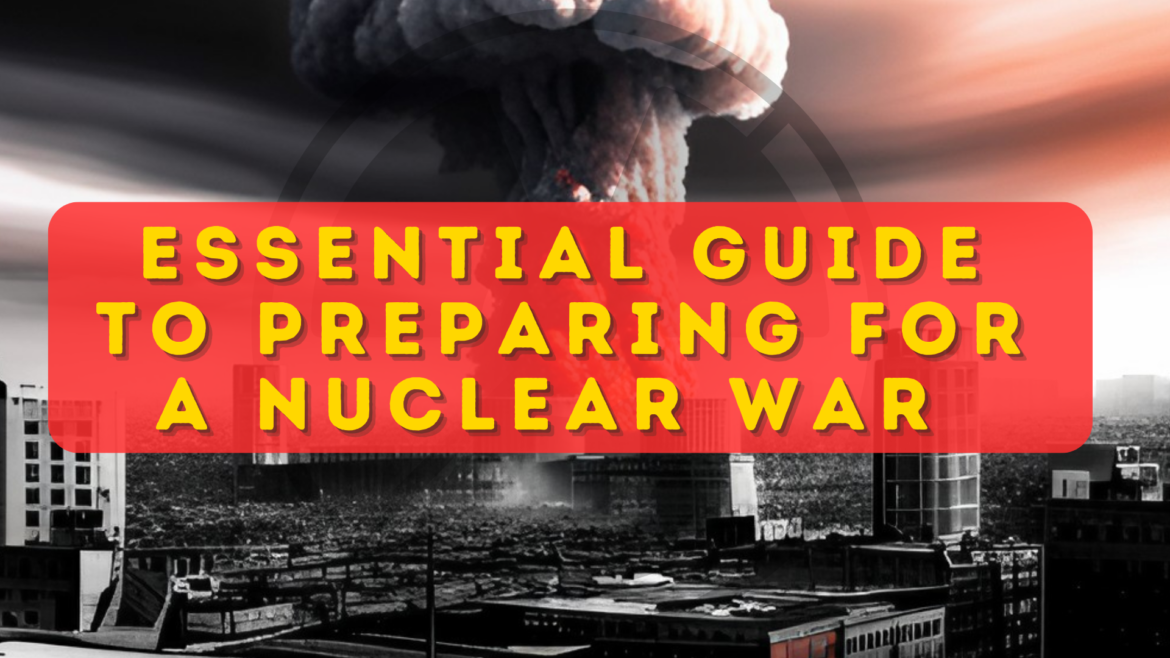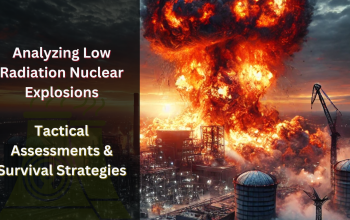There are around 13,000 nuclear weapons in the world right now based on rough estimates and we currently have at least 3 active nuclear flashpoints. The magnitude of devastation the usage of even a fraction of these weapons in a nuclear war could cause is unparalleled, extending far beyond immediate physical destruction and loss of life. The implications are multidimensional, encompassing environmental, economic, and social disruptions that would persist long after the initial attack.
Any flashpoint can trigger a nuclear world war and such a nuclear war would not only reshape landscapes but also reconfigure global power dynamics, economies, and societies in ways that are difficult to predict. Its aftermath would be characterized by radioactive fallout, crippled infrastructures, devastated ecosystems, and a world grappling with the long-term effects of radiation exposure. This article explores these dire consequences, underscoring the urgency of preventing such a catastrophe.
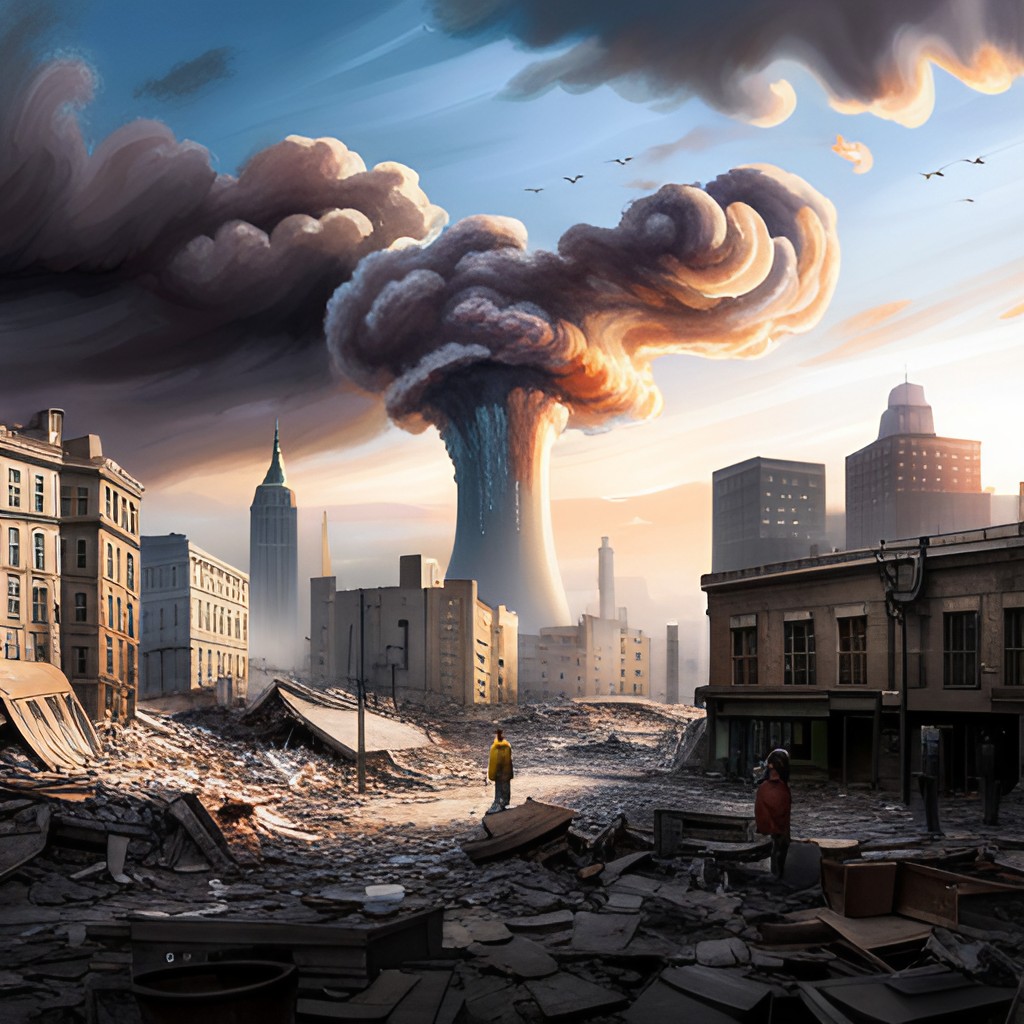
The Immediate Effects of Nuclear War
The immediate aftermath of a nuclear detonation presents a scene of profound devastation. The scale of destruction surpasses that of any conventional explosives, with the blast wave causing significant damage to infrastructure and landscapes. (Risk factor #1: Loss of shelter)
The image below shows the impact radius of different sized nuclear bombs. Modern tactical strategic nuclear weapons can have a yield of around 1 KT. If such a device is used on any urban centre, it can easily damage everything within a 2 km radius. Higher yield devices like the ones used in Hiroshima and Nagasaki can easily have a yield above 10 KT and in such a scenario the blast radius can expand up to 3 to 5 km.

Immediately after a nuclear detonation the buildings crumble, dust is raised by the shock wave, and visibility may be limited for an hour or more due to the debris in the air. (Risk factor #2: Breathing difficulty)
Contrary to popular belief, contamination with radioactive fallout is not immediately life-threatening to the population or the responders who assist them. However, this does not diminish the long-term dangers posed by radiation exposure. The mixture of debris and soil with radionuclides, which is sent up into the air and falls back to Earth, poses a lingering threat. (Risk factor #3: Radiation)
The social and political implications of a nuclear detonation are equally profound. The immediate need for mass evacuation, disaster response, and recovery efforts would place immense strain on governments and societies. Moreover, the detonation would likely trigger a cascade of geopolitical events, including potential retaliatory strikes and shifts in global power dynamics.
One thing that we need to keep in mind is that once the nuclear war starts, we can no longer rely on our governments. It does not matter where you live, governments are not going to be able to save everyone. Which is why WE must prepare for OUR survival! (Risk factor #4: Social breakdown)
You will be on your own, no one will be coming to help you. At least not in the first few days. The social order will collapse. Survival instinct will kick in and when it does, it`ll pay to be prepared beforehand.
Long-Term Impact: Environmental and Climatic Disruptions
A nuclear war would have devastating long-term effects on the environment and climate, potentially causing a global catastrophe.
One of the primary concerns is the dramatic drop in global temperatures due to the large amounts of soot and dust thrown into the atmosphere after a nuclear detonation. This phenomenon is often referred to as a “nuclear winter.” (Risk factor #5: Extreme temperatures) The sunlight-blocking effect of this soot could lead to a significant drop in temperature, disturbing weather patterns and affecting agricultural productivity, which could result in a global famine. (Risk factor #6: Famine)
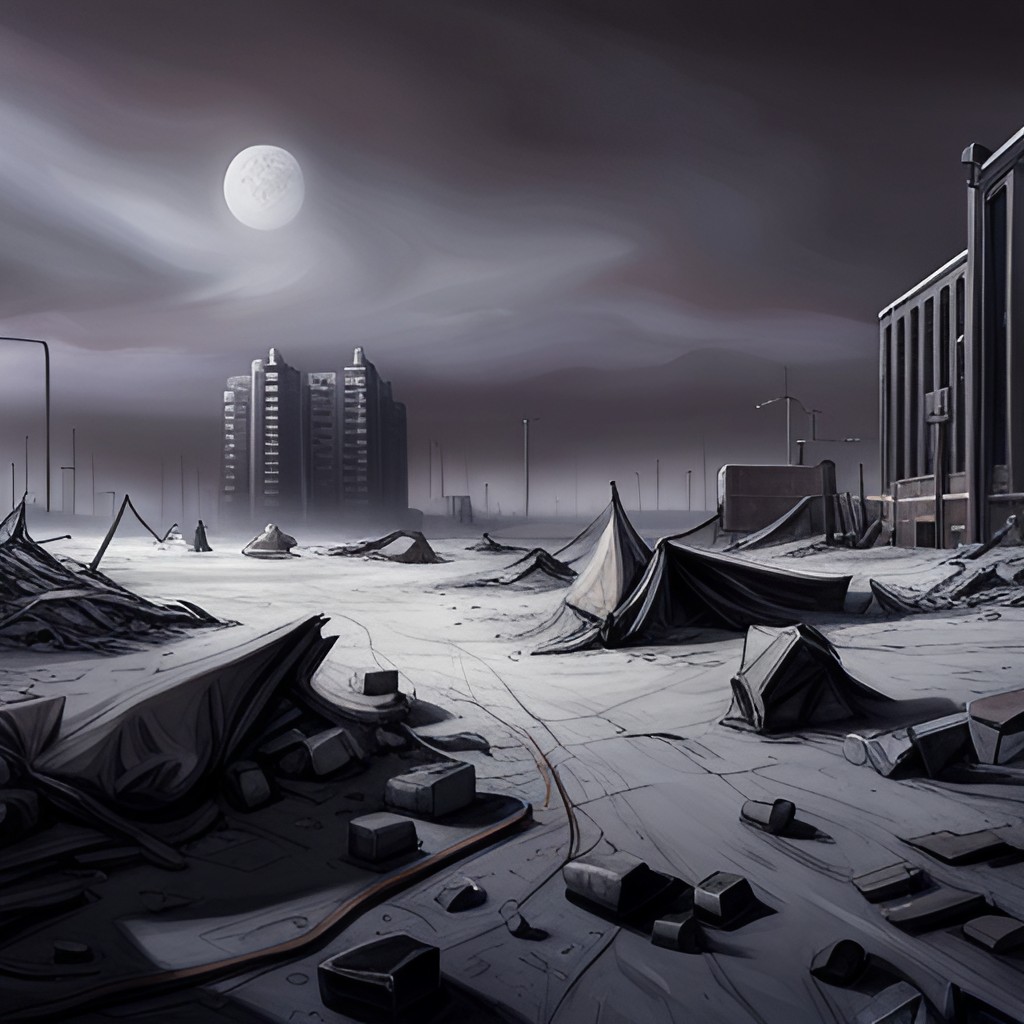
The expansion of sea ice into populated coastal areas is another potential consequence of the cooling effect. This could significantly affect marine life and disrupt ecosystems.
Additionally, the layer of smoke in the atmosphere resulting from a nuclear war could exacerbate ocean acidification in the short term. This would further impact marine ecosystems, particularly those that are already vulnerable due to existing environmental stressors.
A nuclear war involving even a limited number of weapons could pose a worldwide threat due to climate change and ozone destruction. The release of vast amounts of energy and radioactivity from nuclear detonations could have lasting effects on the weather and climate, and the resulting radiation could lead to severe health consequences for humans and other living organisms.
A nuclear war would mean a climate disruption with devastating consequences that could threaten the lives of billions of people.
Preparing for a Nuclear War: A 360-Degree Approach
Preparing for a nuclear war involves taking steps at the individual, community, and national level. Although the hope is that such preparations will never be needed, being prepared can make a significant difference in the event of a nuclear disaster.
Individual Preparedness:
- Education: Individuals should educate themselves about nuclear threats and what to do in case of a nuclear detonation. This includes understanding the potential effects and learning how to protect oneself from immediate danger and long-term radiation exposure.
- Emergency Kit: Each household should have an emergency kit ready. This kit should include items like bottled water, canned food, a battery or crank-powered radio, flashlights, batteries, a first-aid kit, and any necessary prescription medications.
- Shelter Planning: Individuals should know where their nearest fallout shelter is, or identify a place in their home that could serve as a makeshift shelter. Basements or windowless rooms in the middle of the house are often the safest places.
- Communication Plan: Families should develop a communication plan in case they are separated during a disaster.
Community Preparedness:
- Community Response Plans: Communities should develop response plans that include designated fallout shelters, evacuation routes, and communication systems.
- Training Programs: Communities should offer training programs in first aid, emergency response, and radiation safety.
- Stockpiling Resources: Communities should consider stockpiling food, water, and medical supplies. They should also have decontamination equipment available.
National Preparedness:
- National Defense: The government should maintain a robust national defense system capable of detecting and responding to nuclear threats.
- Infrastructure Protection: The government should invest in infrastructure protection, including strengthening key facilities against nuclear blasts and ensuring the resilience of power and communication networks.
- Public Education: Governments should invest in public education campaigns about nuclear threats and run regular drills to ensure the public is prepared.
- International Diplomacy: On a global scale, nations should work together to promote nuclear disarmament and non-proliferation to reduce the risk of nuclear war.
Risk factors
While the 360 planning approach covers different levels of planning starting from individual level going up to state level planning. The most important bit in our opinion is individual planning. Nuclear war is one of the most extreme survival scenarios because it affects every single aspect of life. From shelter to food, from health to long term plans. Which is why although it is best to start preparing individually but to really survive a nuclear war scenario, you will need to have some sort of community set up going.
In this article we have pointed out 6 main risk factors that are likely to be created by a nuclear war. We will cover these individually in future articles.
- Loss of shelter
- Breathing difficulty
- Radiation
- Social breakdown
- Extreme temperatures
- Famine
In conclusion, preparing for a nuclear war involves a comprehensive approach that includes individual, community, and national efforts. While the primary goal should always be to prevent such a catastrophe, being prepared can help mitigate the impact should it occur.
